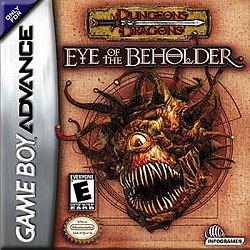Forgotten Realms is a campaign setting for the Dungeons & Dragons (D&D) fantasy role-playing game. Commonly referred to by players and game designers as "The Realms", it was created by game designer Ed Greenwood around 1967 as a setting for his childhood stories. Several years later, it was published for the D&D game as a series of magazine articles, and the first Realms game products were released in 1987. Role-playing game products have been produced for the setting ever since, in addition to novels, role-playing video game adaptations, comic books, and the film Dungeons & Dragons: Honor Among Thieves.

Neverwinter Nights is a role-playing video game developed by BioWare. Interplay Entertainment was originally set to publish the game, but financial difficulties led to it being taken over by Infogrames, who released the game under their Atari range of titles. It is the first installment in the Neverwinter Nights series and was released for Microsoft Windows on June 18, 2002. BioWare later released a Linux client in June 2003, requiring a purchased copy of the game to play. MacSoft released a Mac OS X port in August 2003.
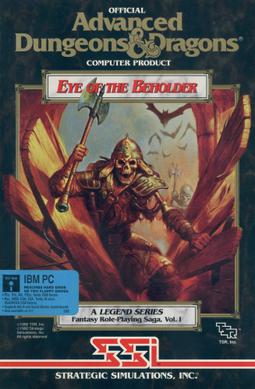
Eye of the Beholder is a role-playing video game for personal computers and video game consoles developed by Westwood Associates. It was published by Strategic Simulations, Inc. in 1991, for the MS-DOS operating system and later ported to the Amiga, the Sega CD and the SNES. The Sega CD version features a soundtrack composed by Yuzo Koshiro and Motohiro Kawashima. A port to the Atari Lynx handheld was developed by NuFX in 1993, but was not released. In 2002, an adaptation of the same name was developed by Pronto Games for the Game Boy Advance.
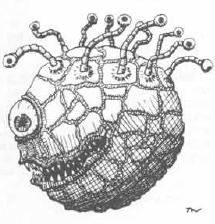
The beholder is a fictional monster in the Dungeons & Dragons fantasy role-playing game. It is depicted as a floating orb of flesh with a large mouth, single central eye, and many smaller eyestalks on top with powerful magical abilities.

Sonic Advance is a 2001 platform video game developed by Sonic Team and Dimps and published by Sega for the Game Boy Advance. It was the first Sonic the Hedgehog game to be released on a Nintendo console with Sonic Adventure 2: Battle on the GameCube, and was produced in commemoration of the series' tenth anniversary. The story follows Sonic, Tails, Knuckles, and Amy as they journey to stop Doctor Eggman from taking over the world. Controlling a character, players are tasked with completing each level, defeating Eggman and his robot army, and collecting the seven Chaos Emeralds.

Godzilla: Destroy All Monsters Melee is a fighting game based on Toho's Godzilla franchise. It was developed by Pipeworks Software and published by Infogrames under the Atari brand for GameCube in 2002. A companion game developed by WayForward Technologies for Game Boy Advance, Godzilla: Domination!, was released in November of the same year. Destroy All Monsters Melee was later released for Xbox in 2003, featuring additional content and enhanced graphics.

Dragon Ball Z: Budokai, released as Dragon Ball Z in Japan, is a fighting video game developed by Dimps for PlayStation 2 release in 2002 and GameCube release in 2003. The first game in the Dragon Ball Z: Budokai series, it is based on the Japanese anime series Dragon Ball Z, part of the manga franchise Dragon Ball. It was published in Japan by Bandai and in North America by Infogrames, and was the first console Dragon Ball video game in five years since Dragon Ball GT: Final Bout (1997).

The Temple of Elemental Evil is a 2003 role-playing video game by Troika Games. It is a remake of the classic Dungeons & Dragons adventure The Temple of Elemental Evil using the 3.5 edition rules. This is the only computer role-playing game to take place in the Greyhawk campaign setting, and the first video game to implement the 3.5 edition rule set. The game was published by Atari, who then held the interactive rights of the Dungeons & Dragons franchise.
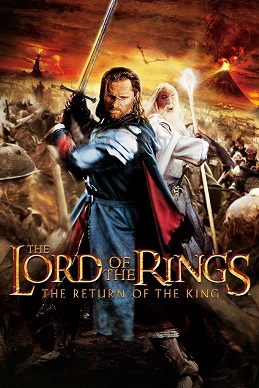
The Lord of the Rings: The Return of the King is a 2003 hack and slash action game developed by EA Redwood Shores for the PlayStation 2 and Windows. It was ported to the GameCube and Xbox by Hypnos Entertainment, to the Game Boy Advance by Griptonite Games, to mobile by ImaginEngine, and to Mac OS X by Beenox. The game was published by Electronic Arts. It is the sequel to the 2002 game The Lord of the Rings: The Two Towers.
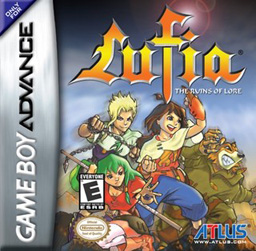
Lufia: The Ruins of Lore, known in Japan as Chinmoku no Iseki: Estpolis Gaiden, is a role-playing video game developed by Atelier Double and published by Taito in Japan in 2002 and by Atlus a year later in North America. It is the fourth title in the Lufia series of video games and was released as a "gaiden", or side story, to the main series; as a result, it does not feature many elements common to the rest of the series, such as the Sinistrals and the Dual Blade.

Eye of the Beholder II: The Legend of Darkmoon is a 1991 role-playing video game and the sequel to the first Eye of the Beholder. It used a modified version of the first game's engine, added outdoor areas and greatly increased the amount of interaction the player had with their environment, along with substantially more role-playing aspects to the game. A sequel, Eye of the Beholder III: Assault on Myth Drannor, was released in 1993.
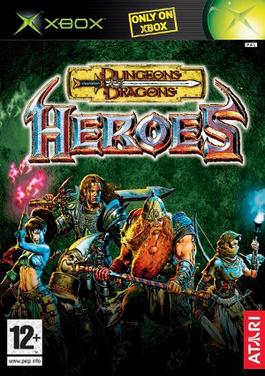
Dungeons & Dragons: Heroes is a hack and slash video game with RPG elements. It was published by Atari Interactive and developed by the subsidiary's Hunt Valley development studio, exclusively for Xbox in 2003. It is set in the Dungeons & Dragons universe and is playable solo or with up to four players. Players take on the role of four reincarnated heroes brought back to life to fight their former nemesis, a wizard named Kaedin.

Descent to Undermountain is a role-playing video game developed and published by Interplay in 1998. Based on the Dungeons & Dragons setting of Undermountain in the Forgotten Realms, it casts the player as an adventurer out to explore the treasure-filled recesses of the Undermountain dungeon. The "Descent" part of the name refers to the game's use of the 3D rendering engine from the 1995 game Descent.

Dragon Ball Z: The Legacy of Goku is a series of video games for the Game Boy Advance, based on the anime series Dragon Ball Z and part of the Dragon Ball video game series. All three games are action role-playing games. The first game, Dragon Ball Z: The Legacy of Goku, was developed by Webfoot Technologies and released in 2002. The game was followed by two sequels: Dragon Ball Z: The Legacy of Goku II, released in 2003, and Dragon Ball Z: Buu's Fury, released in 2004. Buu's Fury was re-released in 2006 as part of a Game Boy Advance two-pack, which includes Dragon Ball GT: Transformation on the same cartridge. In 2016, Webfoot Technologies claimed to be starting development of another sequel.

Terminator 3: Rise of the Machines is a 2003 first-person shooter video game based on the film of the same title, with elements of hand-to-hand combat in the third-person perspective. It was developed by Black Ops Entertainment, with assistance work done by other Atari-owned subsidiaries. The game was published by Atari for PlayStation 2 and Xbox in 2003. An isometric shooter version was released for the Game Boy Advance during the same year. The game was also going to be released for GameCube, but was eventually cancelled.

Shining Soul is an action role-playing game for the Game Boy Advance. It is part of the Shining series. Shining Soul is a reboot of the Shining series. The game was followed by a sequel, Shining Soul II, in 2003. Both games were re-released in Japan in early 2006 as part of the Game Boy Advance "Value Selection".

Dragon Quest Characters: Torneko's Great Adventure 3 – Mystery Dungeon is a 2002 role-playing video game developed by Chunsoft and Matrix Software and published by Enix for the PlayStation 2. It is part of the Dragon Quest and Mystery Dungeon series and contains randomly generated dungeons and uses turn-based action combat. The game was also made for the Game Boy Advance in 2004 as Torneko's Great Adventure 3 Advance.

Neverwinter Nights is a series of video games developed by BioWare and Obsidian Entertainment, based on the Forgotten Realms campaign setting of the Dungeons & Dragons role-playing game. Aside from also being set around the city Neverwinter, it is unrelated to both the 1991 Neverwinter Nights online game and the 2013 online game called Neverwinter.
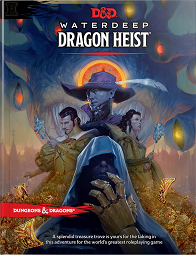
Waterdeep: Dragon Heist is an adventure module for the 5th edition of the Dungeons & Dragons fantasy role-playing game. It is the first part of the Waterdeep storyline and followed by a second adventure, Waterdeep: Dungeon of the Mad Mage.
